Monsal Trail
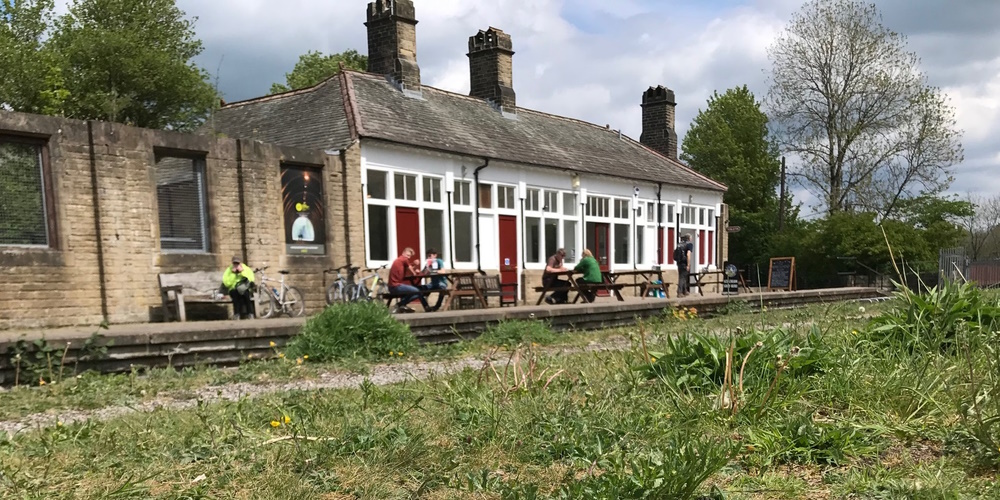
Millers Dale Station
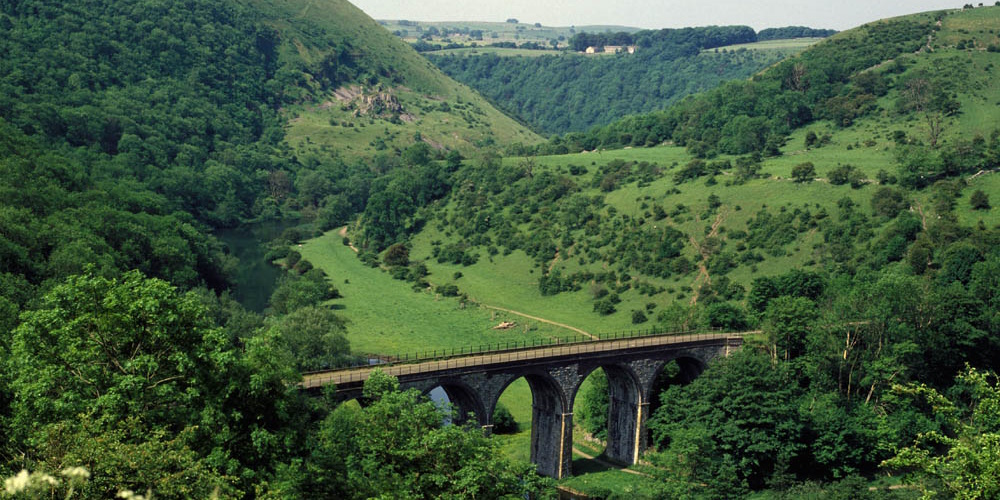
Monsal Head Viaduct
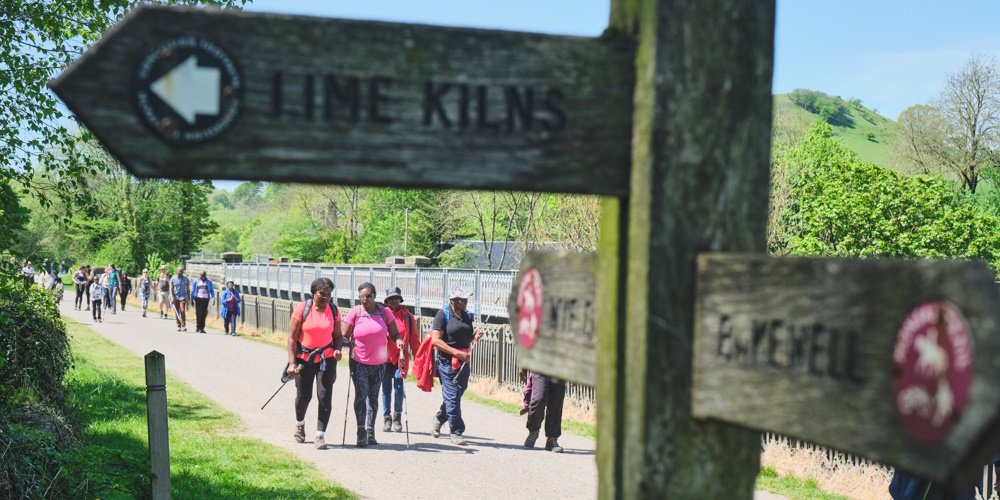
Walkers on the Monsal Trail
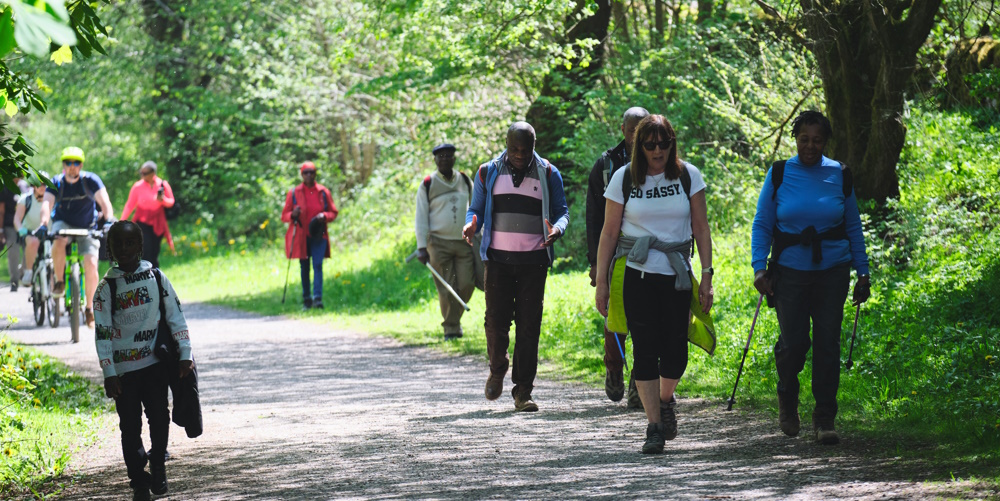
Walkers on the Monsal Trail
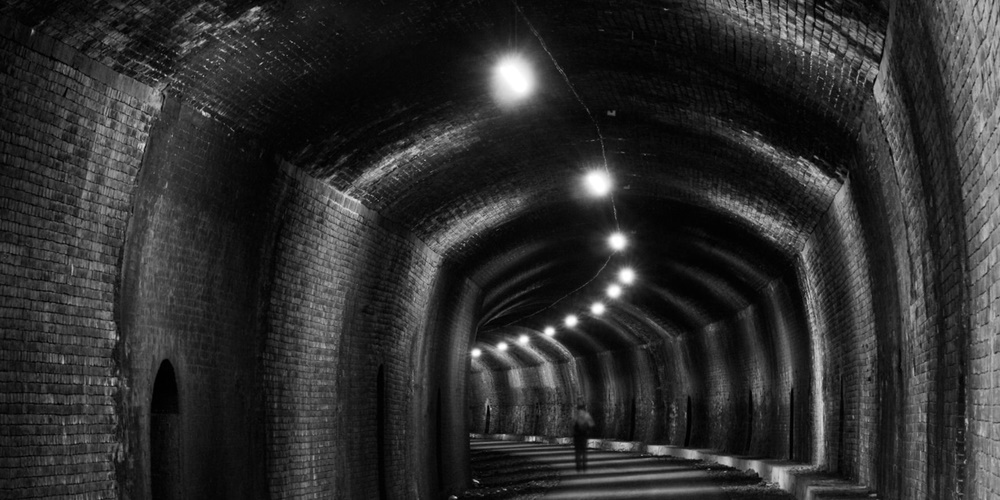
Walkers in one of the Monsal Trail tunnels
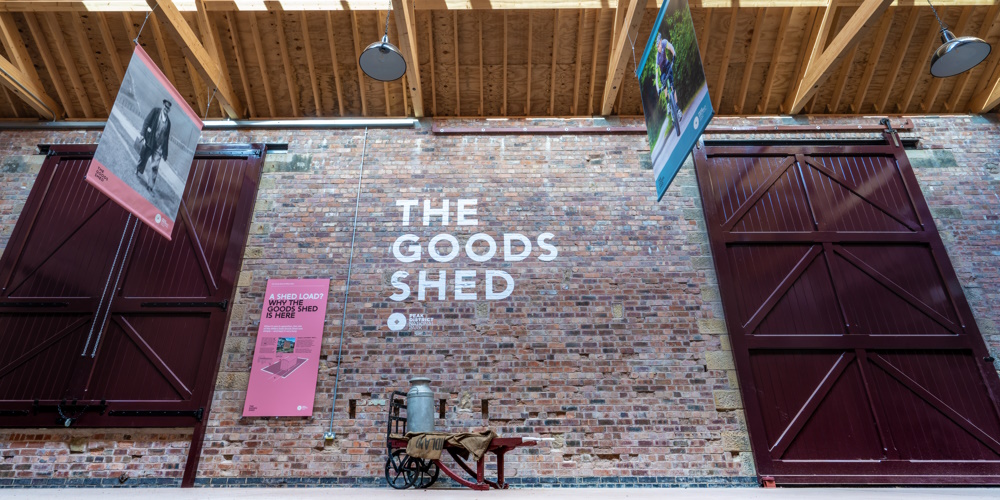
Millers Dale Goods Shed
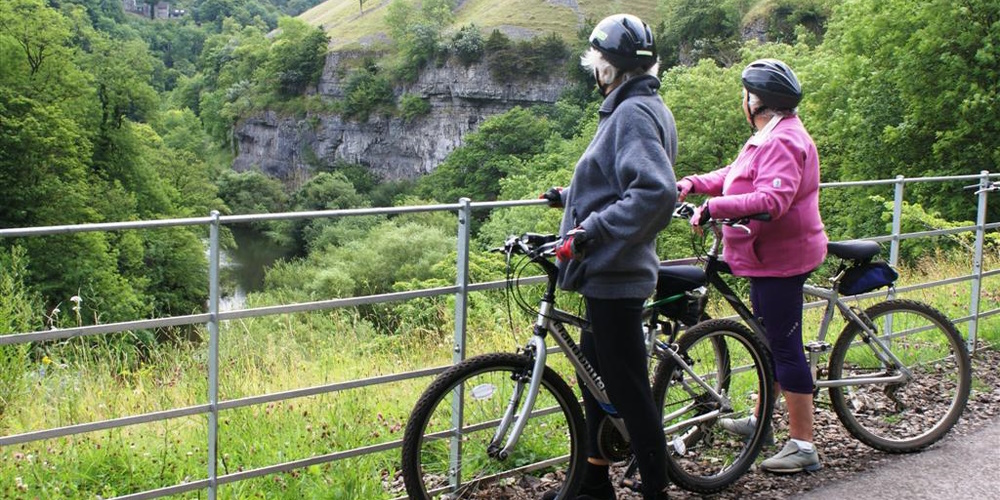
Enjoy views of the river Wye at Water-cum-Jolly
What is the Monsal Trail?
The Monsal Trail is a traffic-free route for walkers, runners, cyclists, horse riders and wheelchair users through spectacular limestone dales with incredible views from places like the iconic Headstone Viaduct (as often seen from Monsal Head).
The trail is 8.5 miles long, stretching at its furthest points between Blackwell Mill in Chee Dale and Coombs Road in Bakewell, with lots of access points connecting to additional footpaths and bridleways. The route is near to Great Longstone, Little Longstone, Cressbrook Mill, Litton Mill and Tideswell Dale.
The route follows the former Manchester to London Midland Railway line, closed in the late 1960s.
Families with young children and pushchairs, wheelchair users, cyclists and strollers will love the Monsal Trail for its easy access and flat surfaces through White Peak hills and dales. There are a number of refreshment stops along the way.
Facilities
parking icon Parking
The old stations at Bakewell, Hassop and Millers Dale have pay and display car parks and offer easy access onto the Trail. At Bakewell, walkers and cyclists can also park in the pay and display car parks at the Agricultural Business Centre or in the town centre with footpath access to Coombs Road and then to the Trail.
There are also pay and display car parks at Tideswell Dale (with EV charging) – about 1 mile from the Trail, and at Wyedale – a ten minute walk along a bridleway to the Trail at Blackwell Mill. Access from Monsal Head is only via a steep walk to the Trail where it crosses the Headstone Viaduct. These locations are not accessible routes to the Trail.
Coaches can be parked at Bakewell's Agricultural Business Centre and at Monsal Head car park.
cafe icon toilet icon Café and toilets
The old stations at Hassop and Millers Dale have cafés and accessible toilets. The renovated Goods Shed at Millers Dale Station provides visitor information, background to the Trail’s railway heritage and offers shelter for picnickers if the weather is bad.
A full Changing Places Toilet (CPT) facility is available at Millers Dale Station and can be accessed directly from the car park area, adjacent to the EV charging zone. Please use a Radar Key or ask at the Refreshment Rooms.
picnic icon no bbq icons Picnics, no BBQs
You can enjoy a picnic at various points along the Monsal Trail, but please take home what you bring. BBQs or fires of any sort are not permitted anywhere along the Monsal Trail or surrounding land.
Dog icon Visiting with your dog
Dogs are welcome on the Trail but please keep them on a lead for the safety and respect of other visitors. Adjacent fields may contain livestock where extra care should be taken. Please take mess home or use one of the designated bins along the Trail.
bike icon Bike hire
To explore more of the Peak District National Park on our traffic free routes, visit the High Peak Trail and Tissington Trail. Easy access, pay and display parking and bike hire for these trails are at Parsley Hay and Ashbourne.
Our Parsley Hay and Ashbourne bike hire centres also offer a range of supported access and mobility equipment.
Map icon Map
The Monsal Trail is in the middle of the Peak District National Park. Bakewell is at one end of the Trail and Blackwell Mill, near Buxton, is at the other end.
You can access the Monsal Trail in many places. Easy access for wheelchair and mobility scooter users is at Bakewell Station, Hassop Station, Great Longstone Station and Millers Dale Station.
Bakewell Station
Ordnance Survey grid reference: SK 2224 6898
Postcode: DE45 1GE
What3Words: typist.echo.available
Driving directions
Hassop Station, near Bakewell
Ordnance Survey grid reference: SK2175 7053
Postcode: DE45 1NW
What3Words: onto.sapping.mimics
Driving directions
Millers Dale
Ordnance Survey grid reference: SK 1385 7328
What3Words: thighs.suddenly.tabs
Driving directions
bus icon Bus services
Bus services from Nottingham, Derby and Manchester operate along the A6, the nearest main road to the Monsal Trail, with stops at Bakewell town centre, Ashford in the Water, White Lodge, Taddington, Blackwell Turn and Wye Dale (limited service).
Other routes include services operating from Chesterfield and Sheffield to Bakewell and also to Buxton via Tideswell and Millers Dale. A limited service also operates to Monsal Head.
More information from Traveline or
Nearest train stations to the Monsal Trail are at Buxton and Matlock, from where you would need to travel by bus to an access point.
Downloads
Learn more and explore the area around the Monsal Trail with these useful web pages and leaflets.
Monsal Trail leaflet (586KB) (includes map)
Don’t miss…
Viaducts and tunnels
The Monsal Trail was once part of the Midland Railway line, from Manchester to London (1863 to 1968). It has been a recreational route since 1981. As you walk, cycle or ride you’ll be in the footsteps of the Victorian engineers and ‘navvies’ hard work as well as having a chance to spot the wildlife that’s moved in over the last 50 years.
The monumental Headstone Viaduct in Monsal Dale and six tunnels along the way make this an extraordinary trail to experience. The longer tunnels are about 400 metres long and lit during daylight hours. These are Headstone Tunnel, Cressbrook Tunnel, Litton Tunnel and Chee Tor Tunnel. The two shorter tunnels are Chee Tor No.2 and Rusher Cutting. Amazingly, the tunnels were only opened to visitors to pass through safely in 2011.
Keep to the left as you pass through the tunnels. Making steam train noises is optional!
Headstone Viaduct (sometimes called Monsal Viaduct) is probably the most famous feature of the trail. Now it is listed for its historic and architectural interest, but when new, it was controversial. Its construction aroused strong opposition.
Victorian environmentalist, essayist and poet John Ruskin said: "There was a rocky valley between Buxton and Bakewell, once upon a time, divine as the Vale of Tempe... you enterprised a Railroad through the valley - you blasted its rocks away, heaped thousands of tons of shale into its lovely stream. The valley is gone, and the Gods with it; and now, every fool in Buxton can be in Bakewell in half an hour, and every fool in Bakewell at Buxton; which you think a lucrative process of exchange – you Fools everywhere."
wildlife icon plant icon Wildlife
There are nature reserves, looked after by Derbyshire Wildlife Trust, at Priestcliffe Lees, Millers Dale Quarry and Chee Dale alongside the Monsal Trail.
What to look out for:
Spring: Ash, hazel and willow trees burst into life and colourful wildflowers bloom – cowslips, early purple orchids, bluebells, wood anemone and ramsons (wild garlic). Dippers are some of first birds each year to build a riverside nest along the Wye.
Summer: House martins swoop through the air catching insects at Millers Dale Station. You might see migrating wheatears on grassland with their distinctive white bottom, grey wagtails and dippers in the rivers. Look for common blue, green hairstreak and brown argus butterflies. Ox-eye daisy, common rock rose, cranesbill, scabious and more flower alongside the trail.
Autumn: Soak in the fiery leaves on trees changing colour, red berries on hawthorn and rowan trees, and mushrooms and toadstools appear. Winter-visiting thrushes like redwing and fieldfare arrive to gorge on the bounty of berries.
Winter: Look out for bird and animal tracks in the mud or snow and siskins, redpolls and flocks of tits chattering in the trail-side trees.
Rocks from ancient seas
Between Blackwell and Monsal Head, the Monsal Trail cuts through fossil filled limestone that formed over 350 million years ago when the area was a tropical sea near to the equator. Shells, corals and mud built up on the seabed and eventually formed the limestone. South of Monsal Head, the limestone is covered by shales. These were formed from fine muds and sands deposited by vast river deltas flowing into that early sea.
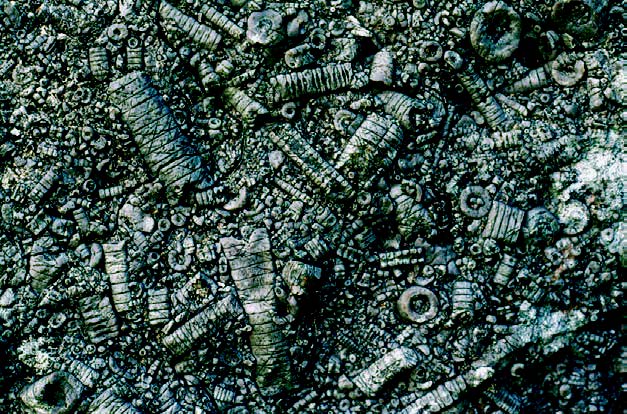
Past industries
Cotton Mills
Litton Mill was a large cotton spinning mill, it opened in 1782, and was notorious for the harsh treatment of child labourers by the owner, Ellis Needham. Many of the children, brought from London and other large cities, died young from the cruel treatment and were buried in the churchyards at Tideswell and Taddington.
Sir Richard Arkwright’s Cressbrook Mill opened in 1783. It was a cotton mill at first, powered by water from Cressbrook stream. The original building was destroyed by fire. In 1812, construction work started on the large Georgian building that can be seen today. 'Big Mill' used water from the River Wye to power its two large water wheels until steam turbines were introduced in 1890. Manufacturing ceased in 1965.
Limekilns
You can see commercial kilns, built in the 19th and 20th centuries, near Millers Dale Station. Quicklime had long been produced in small kilns, mainly for agricultural use, but with the expansion of the steel and chemical industries, demand increased. Limestone, from quarries that opened next to the railway, and coal, brought in by train, were burnt to produce quicklime. This in turn was taken out on the railway. The last kiln closed down in 1944.

Monsal Memories
Enjoy six 10-minute podcasts of memories and voices of people who worked on, lived by or travelled on the former Midland Railway line.
Left click to hear in your web browser, or right click and choose 'Save Link As' to save to your computer or MP3 player.

